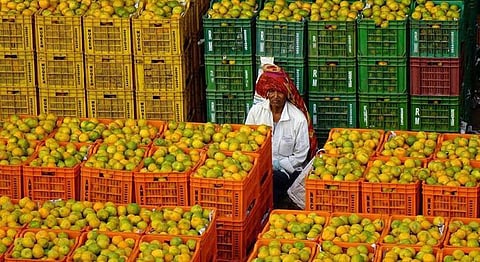
- HOMEGROWN WORLD
- #HGCREATORS
- #HGEXPLORE
- #HGVOICES
- #HGSHOP
- CAREERS
- ABOUT US
- CONTACT US

Every year, the sweltering summer months come with their own fair share of heat, dust and discomfort — offering only one sweet relief: mangoes! Dasheri, Badami, Himsagar, Chaunsa and more: mango variants are a household name in the summers. Of the several homegrown mangoes of India, the Alphonso or hapus stands out, often called the ‘King of Mangoes’. There are no qualms about why the hapus is a favorite – it’s sweet, creamy and unlike many other variants, non-fibrous and juicy. However, the Alphonso carries with it an interesting origin story: did you know that the king of mangoes was actually named after a Portuguese Emperor?
Alfonso De Albuquerque was a Portuguese general – a ‘military genius’ who established the Portuguese colonies in India in the fifteenth century, starting with Goa. During his rule, he administered the ‘Columbian Food Exchange’, a practice which introduced new varieties of fruits and vegetables such as red chillies, maize, tomatoes etc. across the world. The Portuguese emperor sowed the seeds – quite literally – for a new variant of mango as a part of this exchange. In the fifteenth century, Indians were familiar with a certain type of mango – the variants which were called the ‘sucking type’.
These were soft, pulpy, and could be squeezed by hand and sucked out. As a part of the exchange, these mangoes were exported to Europe – and the emperor wanted mangoes that were firm and sweet, mangoes that could be ‘cut and served’ on the table in Europe, where they were being exported. This is when the Portuguese started grafting on mango plants in Goa. They would eventually go on to stumble upon a mango cultivar that pleased the emperor Alfonso – and the rest of the country, for that matter. Thus, the Alphonso mango was born.
The Alphonso mango is now cultivated along the Konkan Coast, from where it makes its way to homes across the country. The Ratnagiri Hapus often takes the spotlight, being one of the best and most expensive of this variant. In India, food is intricately threaded with culture, and it’s no different with the aapus. In many households, the hapus is considered to be a ‘treat’ – saved for special occasions and perhaps only the hottest of summer afternoons. “Cut and Served” on the table – just like the mango’s namesake always wanted it to be – the hapus witnesses a race for the pulpy pieces – after all, the slowest contender ends up with the gutli, the much-dreaded seed of the fruit. For decades, the Alphonso mango has shaped the way Indians enjoy the mango, and will continue to do so for years to come.
Who knew India’s favourite summer treat was the product of a Portuguese king’s trade conveniences!
If you liked reading this article, we suggest you read:
